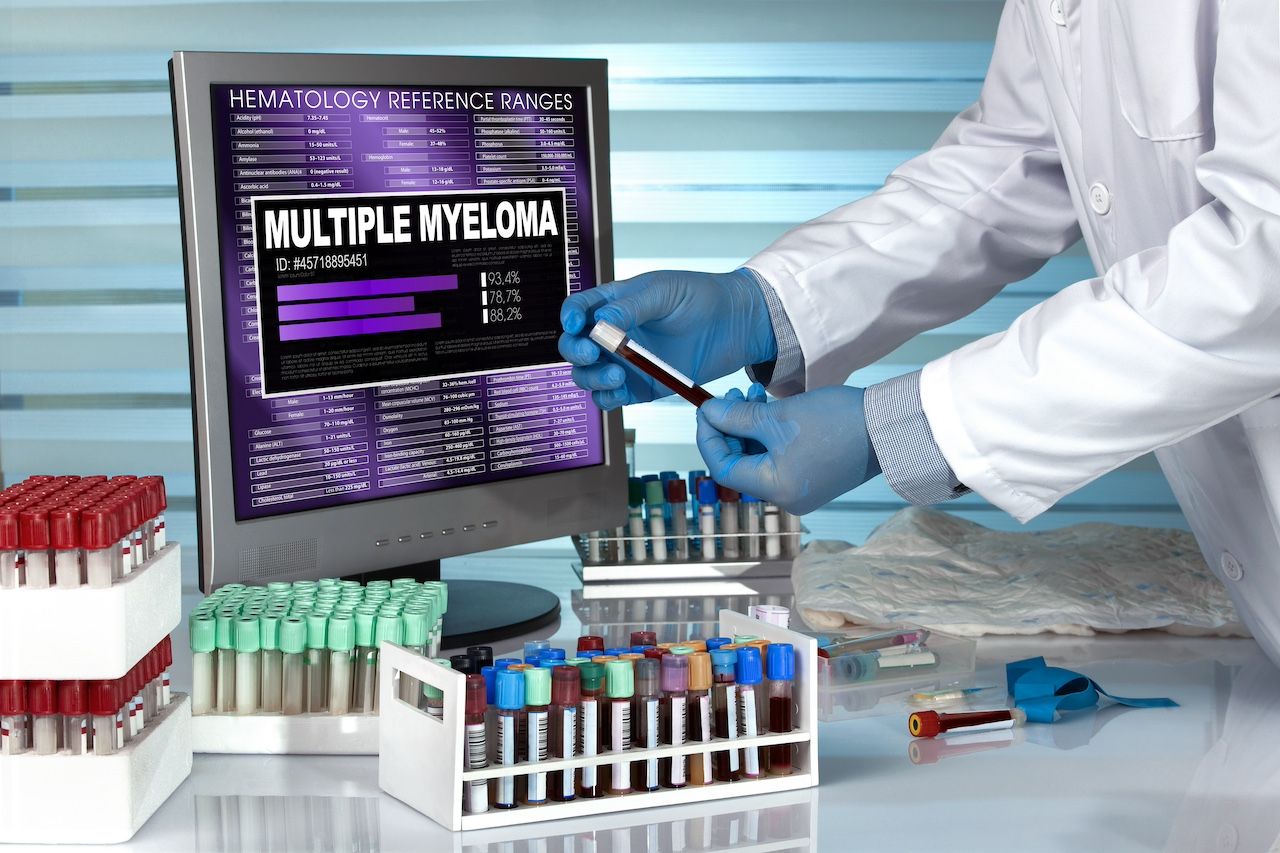- Center on Health Equity & Access
- Clinical
- Health Care Cost
- Health Care Delivery
- Insurance
- Policy
- Technology
- Value-Based Care
Daratumumab-Based Regimen Potential Promising Bridging Therapy for RRMM
The combination of daratumumab and immumodulatory therapy was evaluated among patients with relapsed/refractory multiple myeloma (RRMM) who have failed prior treatment with immunomodulatory agents, proteasome inhibitors, and daratumumab as monotherapy or in combination.
Recent research on a treatment regimen comprising a daratumumab (Dara) backbone and an immumodulatory agent (IMiDs) demonstrates potential for this combination as a bridging therapy among patients with relapsed/refractory multiple myeloma (RRMM) who have failed 3 prior lines of therapy, according to study findings published in Blood Cancer Journal.
In this analysis from the RESET trial, investigators evaluated the effect that retreatment with Dara plus an IMiD could have following previous treatment failure. These investigators noted that even though patients can separately be refractory to Dara, IMiDs, and proteasome inhibitors (PI), when combined, there is a synergistic effect from an IMiD-daratumumab regimen.
“However, there is limited data supporting that Dara re-treatment with a Dara/IMiD combination may provide benefit, even when prior resistance to both individual drug classes has been developed,” the authors wrote. “Different hypotheses have been proposed for this Dara/IMiD synergy, which, among others, involve an increase in both the T cell- or natural killer (NK) cell–mediated antimyeloma activity, but also the elimination of CD38-mediated checkpoint resistance mechanisms.”
Testing in multiple myeloma
Image credit: angellodeco - stock.adobe.com

For the 37 patients included in this analysis, each was refractory to at least 1 IMiD and 1 PI before their disease progressed after Dara administration. As a fourth-line treatment, the immediate previous IMiD was added to a nonchanged Dara regimen and outcomes evaluated for complete response (CR), very good partial response (VGPR), PR, and progression-free survival (PFS).
First, Dara monotherapy was evaluated, and among these patients, the median duration of treatment was 7.9 (range, 1-38) months. The overall response rate was 57%, or a CR in 35%, a VGPR in 32%, and a PR in 22%. Median PFS was 7.5 (range, 1-48) months; for those who achieved a VGPR or better, it was a median 15 months vs 7 months and 2.5 months seen for those who had a PR or a minor response (MR), respectively (P < .0001).
When an IMiD was added to the Dara regimen, or “backbone,” the authors found the patient response to be clinically relevant, with more than half showing evidence of response.
During the median 5.5 (range, 0.5-24) months of follow-up after combination treatment was initiated, a VGPR was seen in 8.1% of patients, a PR in 32.4%, an MR in 13.5%, stable disease in 32.4%, and disease progression in 13.5%. For patients who achieved an MR or worse, PFS and OS were decidedly inferior compared with patients who achieved at least a PR:
- At least a PR:
- PFS: 9 months
- OS: 23 months
- MR or worse:
- PFS: 4 months, for a 61% greater risk of death (HR, 0.39; 95% CI, 0.18-0.85; P = .01)
- OS: 11 months, for a 40% greater risk of death (HR, 0.6; 95% CI, 0.28-1.2; P = .02)
At a median 12 (range, 2-66) months post Dara/IMiD initiation, disease progression was seen in all patients but 21.6% were alive and continuing treatment with other regimens. Also, adding the IMiD, the authors noted, did not spur immune profile alterations beyond those from Dara monotherapy.
Overall, these results were seen independent of dose or IMiD used, prior response to Dara monotherapy, number of prior treatments, and disease stage at diagnosis.
With little known on Dara’s use beyond the first line of treatment, in particular as retreatment, “the results of this study highlight that Dara retreatment strategy via the addition of an IMiD is feasible and provides respectable response rates and PFS in triple-refractory patients,” the authors concluded. “Such regimens may be a bridge therapy, offering a significant disease burden reduction when no other options are available immediately.”
Reference
Kostopoulos IV, Fotiou D, Gavriatopoulou, et a. Efficacy and immune modulation associated with the addition of IMiDs to Daratumumab backbone in multiple myeloma patients refractory to both drug classes: resetting synergistic activity. Blood Cancer J. Published online February 6, 2024. doi:10.1038/s41408-024-00988-x
